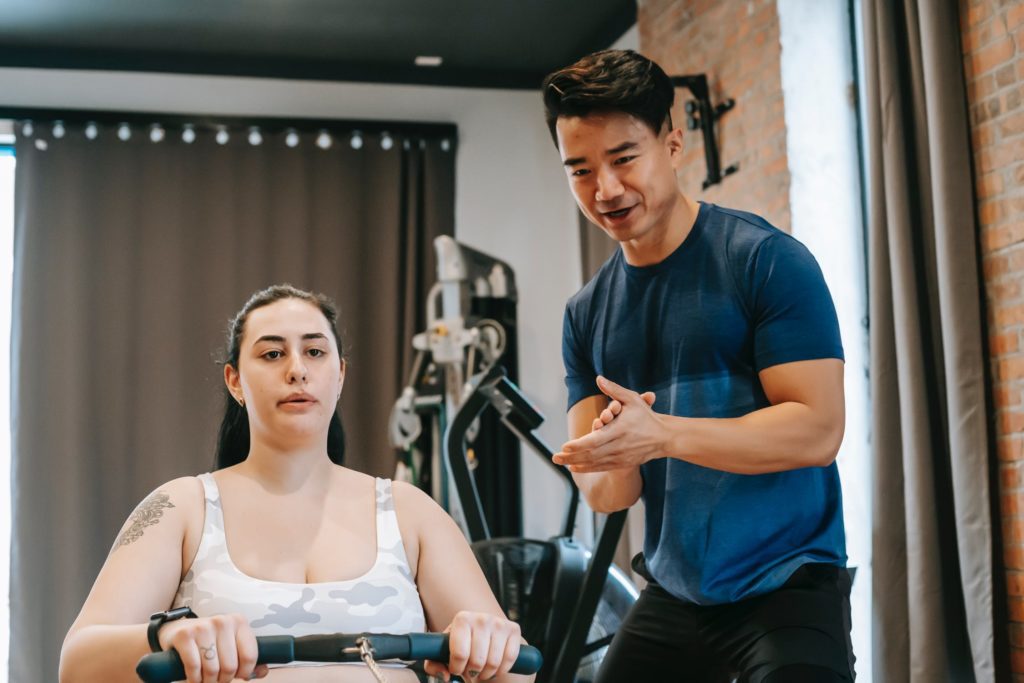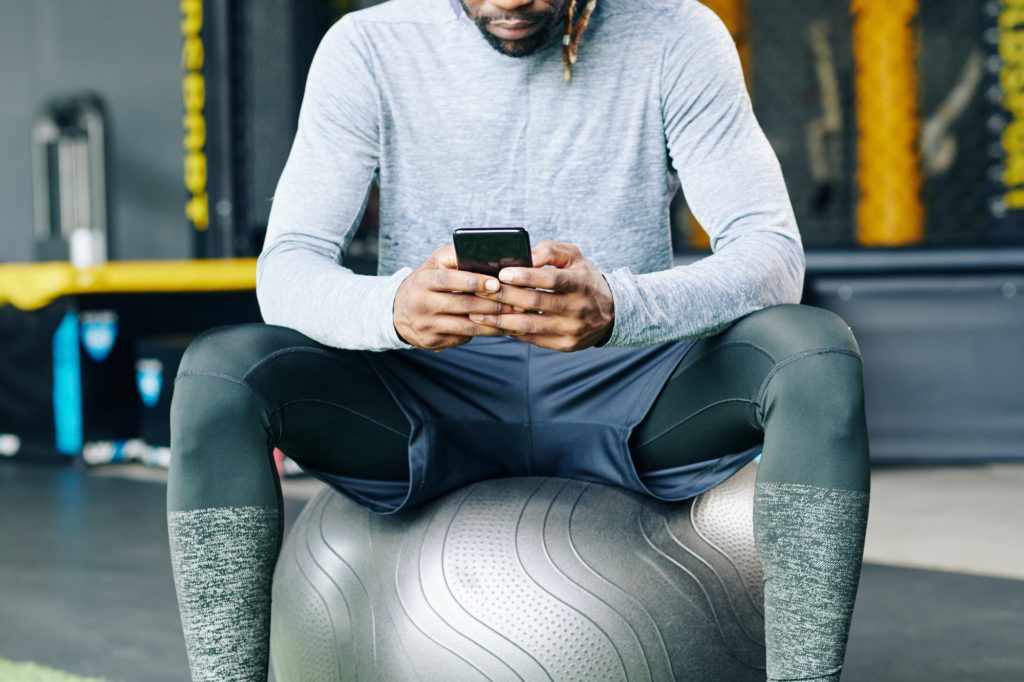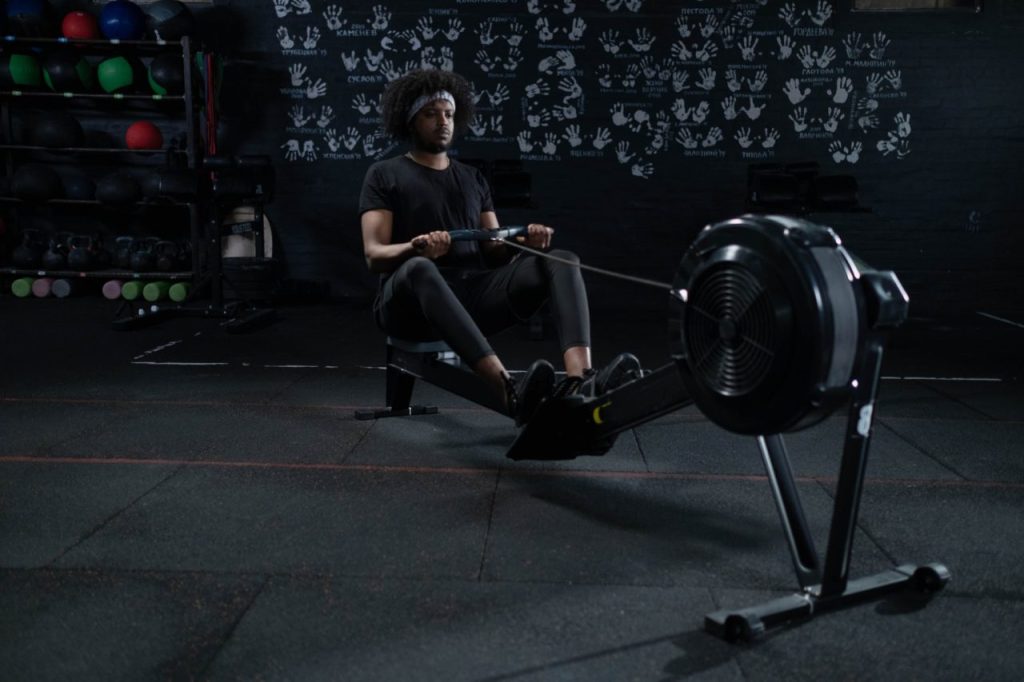The rowing machine is a versatile training tool that benefits athletes of any level or training modality. Rowing can increase both strength and power, as well as cardiovascular conditioning. Using a rowing machine is relatively low-impact and scalable, making it easy to adjust your training based on your goals.
Like any training implement, proper use is essential for getting the best possible results from your workout. Here’s how to properly use the rowing machine to achieve your goals.
How to Use the Rowing Machine Properly
Using the rowing machine properly means understanding how the machine itself works and how to control your body and maintain proper form. Here’s everything you need to know about using the rowing machine properly.
Rowing Machine 101

Before you start your training, it’s important to understand how the machine works. One of the first steps is adjusting the damper. The damper is the resistance control lever on the side of the fan cage. As the name implies, adjusting the damper alters the airflow to create resistance with the fan. Higher damper settings allow more air and create more resistance. Lower damper settings allow less airflow, which creates less resistance and makes for an easier workout.
Another setting to be aware of is the flex foot. Ideally, your heel will rest against the base of the foot flex with the security band across the midfoot. You may have to adjust based on your body type and whether or not you wear shoes.
Warm-Up
The rowing machine is a great cardio warm-up before a strength training workout. However, it’s also a fantastic standalone workout— many athletes use this as their primary form of training for fat loss and endurance training.
Before hopping on the rower, consider doing a quick mobility warm-up to ensure your muscles are ready for the work ahead. Focus on dynamic lower-body movements to adequately prepare the glutes, quads, and hamstrings.
Proper Rowing Form
Perfecting your rowing form can be challenging due to the different positions throughout the movement. To better explain proper rowing form, let’s break it down into the four parts of the movement.
The Catch
The catch position is your starting position on the rower. In this position, your knees should be bent, your torso upright, back straight and tall, with hands firmly holding the handle with an overhand grip. You should be at the front of the machine with shins vertical, perpendicular to the floor. Your chest should lean forward, just slightly ahead of your hips.
The Drive
The drive phase is the initial motion of the movement. When rowing, your strokes are powered by the quick firing of the legs, then the hips, finishing with the arms. While this is a full body workout that engages all the muscle groups, those three primary movers help you achieve proper rowing form in the drive phase.
Start the movement by driving through the legs, keeping your torso upright. As your hands pass your feet, start to lean back slightly as you slide, letting your hips hinge until your legs reach full extension. At that point, bend your elbows and pull the handle back to your chest to finish the drive phase.
The Finish
As the name implies, the finish occurs at the end of the drive phase. To achieve proper rowing machine form during the finish, the handle should be resting at the rib cage with your elbows bent and tucked into your torso. Your upper body should lean back slightly— at the one o’clock position— with your back straight and lats tucked. Your legs are fully extended, and the rowing stroke is complete.
The Recovery
The recovery phase is the reversal of the rowing stroke movement. From the finish, reverse through the drive movement until you reach the catch position.
As a beginner, the movements might feel jilted or slightly disconnected. As you become more comfortable with the indoor rowing machine, the movements should become fluid and consistent.
Breathing
As rowing is a high-intensity cardio workout, timing your breathing is essential for proper rowing technique. Learning to breathe throughout the movement will help improve your anaerobic threshold so that you can row faster for longer.
If you’re using the indoor rowing machine as a warm-up for your workout routine, start with the two-breath method: exhale as you drive, inhale as you recover.
If you’re using the rowing machine as a high-intensity fat-burning workout tool, practice the four-breath technique to get as much oxygen to your muscles as possible: big exhale during the drive, deep inhale, and quick exhale during the recovery and deep inhale as you reach the catch.
Common Mistakes in Rowing Form

As rowing engages every major muscle group and uses a variety of positions, proper form is a must to reduce the risk of injury, especially as you shift gears into a high-intensity rowing workout.
Here are some of the most common mistakes in rowing form to find and fix.
Hunching
Hunching is when your posture fails, and your upper back and shoulders hunch forward. This happens most often during the recovery phase. Remember to keep your back straight and core muscles engaged throughout the exercise.
Scooping
Throughout the rowing exercise, your handles should stay level and the chain tight. If you bend your knees on the recovery before your torso has reversed to the 11 o’clock position, you’ll end up scooping the chain. Remember that your upper back should come forward before your knees bend.
Leading with the Butt
Leading with the butt is a common mistake during the drive phase. Your lower back should never be leading the charge. Make sure your upper back hits the one o’clock position before the slide is complete.
Rowing Equipment and Apps

One of the benefits of using rowing as your preferred piece of gym equipment is that you don’t need any other specialized gear to make progress. However, there are several accessories that can help you get the most from your training.
Some rowers prefer to use gloves to reduce the impact on their hands and to prevent the handle from slipping as things get sweaty. You can see our full recommendation for gloves in this post.
Rowing machines also display a calorie burn feature, which many athletes prefer to use as a guide over measuring their pace or meters. However, the calorie burn is generalized and doesn’t take your unique physical makeup into account. Getting a heart rate monitor can help you better track your cardiovascular training and get a more accurate calorie burn calculation.
There are also several apps to enhance your training experience. One of the top-rated indoor rowing machines is the Concept2. These rowing experts offer two free apps: ErgData to store your workout stats and Concept2 Utility which helps you analyze your data and store progress.
Zwift is another popular app that was primarily used by cyclists to gamify their stationary bike experience. Now, Zwift also has a rowing feature with unique challenges and games to make your training more fun and challenging.
Final Thoughts
Rowing is a fantastic way to improve your strength and conditioning to reach your fitness goals. Using proper form and rowing techniques will help you mitigate the risk of injury while getting the best possible results from your hard work.

